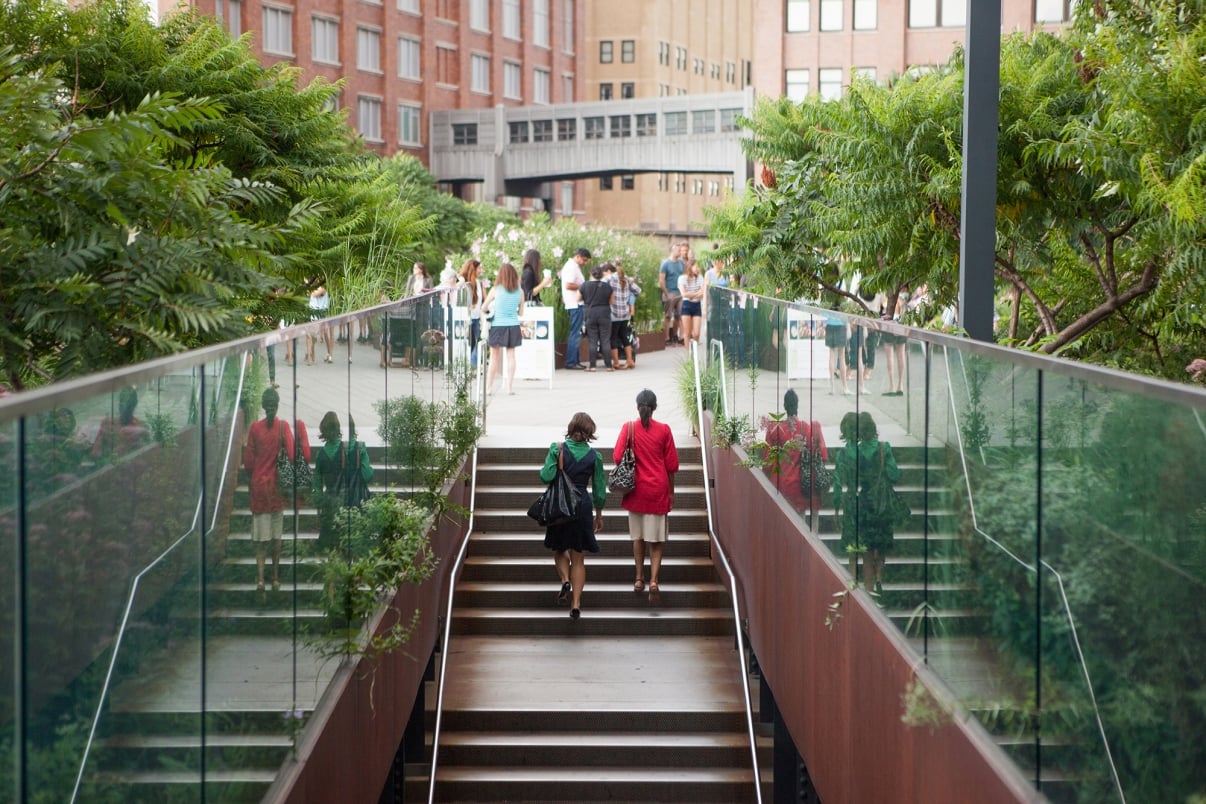
The High Line
A transformative presence in Manhattan, visiting the High Line is a one-of-a-kind, distinctly New York City experience. Built on a long-abandoned railway in Chelsea, it seamlessly blends the built environment with the natural world, offering stunning views of the city while creating an elevated getaway from the bustle of the streets below.

This project has shaped the neighborhood by drawing new visitors and creating new opportunities for economic development. As the epitome of innovative design, the High Line refurbishes the past and carries it into a greener future. When the trains stopped running in the mid 20th century, over 210 plant species grew naturally into the space, and the new High Line highlights this wild landscape with modern pathways and seating areas beautifully nestled into the greenery.
The new design restored the original steel structure and the original railroad tracks, including its signature art deco railings. The High Line provides a unique way to experience the city, enabling visitors to catch unexpected views while wandering from Greenwich Village, through West Chelsea and into Hudson Yards.
High Line Beauty
The pictures speak for themselves.

Did You Know?
- The High Line is the first public park constructed on an elevated rail line in the United States.
- Sections 1 and 2 created 344 new construction jobs.
- The Whitney Museum is located at the southern tip of the High Line.
High Line History
Prior to the High Line, freight trains ran at street-level tracks delivering goods through Lower Manhattan. After the death of hundreds of people, officials decided to elevate the tracks in the 1920s. Built in the early 1930s, the first trains ran on the High Line in 1933, transporting tons of meat, dairy, and produce to buildings and neighborhoods along the route from 33rd Street down to 14th Street —in some cases even cutting through buildings.
Beginning in the 1960s, train use began to decline and after the trains stopped running in early 1980s the structure fell into disrepair. When the transformation was first conceived, years later, the elevated structure was structurally robust, but in need of long neglected maintenance and was even considered for demolition. That all changed with one idea.
- 1999: Residents of the area, Joshua David and Robert Hammond, start the community group, Friends of the High Line, dedicated to creating an elevated park-greenway, inspired by the Promenade Plantée in Paris.
- 2002: The Bloomberg administration backs the project, filing with the United States Surface Transportation Board to request authorization for a rail banked trail on the site.
- 2004: The City of New York and Friends of the High Line hold a competition to select the design team.

- June 2005: The Surface Transportation Board grants a Certificate of Interim Trail Use.
- November 2005: CSX Transportation, Inc, donates the High Line structure south of 30th Street to the City.
- June 2005: The City creates the West Chelsea Special District to foster development along the High Line and West Chelsea neighborhood. The rezoning enables new developments, facilitates the reuse of the High Line, supports affordable housing, and enhances the art gallery district in the area.
- 2006: Construction begins on the High Line.
- 2009: The first section of the High Line is opened by Friends of the High Line Co-Founders, Mayor Bloomberg, and other government and community luminaries.
Give us a ring to find out more about the High Line.











